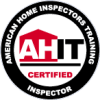Should You Conduct Radon Inspections in Your Home?
You work hard to keep your family safe, but one often overlooked aspect could undermine your efforts.
Here is the problem: a lot of people are unaware of radon, how it enters the home, and how to fix it.
The answer is simple: Certified professionals at Keystone Home Inspection can do radon testing to identify how radon is entering the building using specialized instruments and techniques. The goal is to seal the cracks and install an effective ventilation system.
What is Radon?
Radon is an invisible radioactive gas that has no color, smell and taste. Uranium in rocks and soil produces radon gas when they decay and once radon has decayed, it turns into radioactive solids, also called radon daughters or radon progeny. The radioactive particles are mixed in the air and since it is a gas, it can enter houses and buildings through cracks and openings where the particles attach to dust in the air. Radon concentrations are higher indoors than they are outdoors. Without proper ventilation, radon levels increase and may reach dangerous levels.
Inhaling radon can pose risks to one's health and can cause lung cancer, leading some people to refer to radon as the "silent killer". Exposure to high concentration levels of radon can cause lung cancer even to non-smokers with a 1 to 20 chance. If you are a smoker, you have a higher risk of developing lung cancer. However, radon is colorless, odorless, and has no taste, so it cannot be simply detected in regular situations and can be easily ignored.
How is radon testing done?
Radon testing is a two-day process wherein testers are placed at the lowest level in the house or building like the basement. The actual radon test is not expensive and costs no more than $200. After 48 hours, the canisters will be collected and will be sent to the laboratory for results. If it is found that the levels of radon are at or above 4.0 pCi/L, it is considered to be "unsafe" by the EPA. Radon levels vary daily, depending on the season and ventilation system.
Resolving increased radon levels is simple. Certified radon testing experts find how radon seeps into the structure and seals the cracks. You may also improve the ventilation system of the structure to air out the radon inside your home.
Stop putting your family at risk and conduct radon testing as soon as possible to detect if this radioactive gas is present in your home in risky levels. Health and safety come first! When it comes to your family's health, radon testing is never too late. Contact Keystone Home Inspectors today to conduct radon testing in your home or business!
Contact Us
* - Required Field
Keystone Home Inspection is proud to be a home inspector in the Greater Cleveland, Ohio area including Cuyahoga County, Geauga County, Lake County, Lorain County, Medina County, Portage County, and Summit County.
All Rights Reserved 2025, Keystone Home Inspection - Admin Login | Privacy Policy | Digital Marketing & Social Media Marketing by Alt Media Studios










